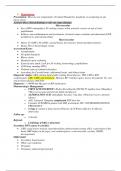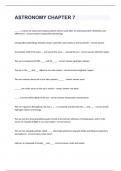Exam (elaborations)
Manual VISE Prep - NR667 VISE Prep for NR667 You will be required to have a live patient for this VISE call which is a video call with your professor. You will be given a chief complaint as well as some vital signs information, but you will conduct your p
- Course
- Institution
Manual VISE Prep - NR667 VISE Prep for NR667 You will be required to have a live patient for this VISE call which is a video call with your professor. You will be given a chief complaint as well as some vital signs information, but you will conduct your patient interview, physical examination, or...
[Show more]




